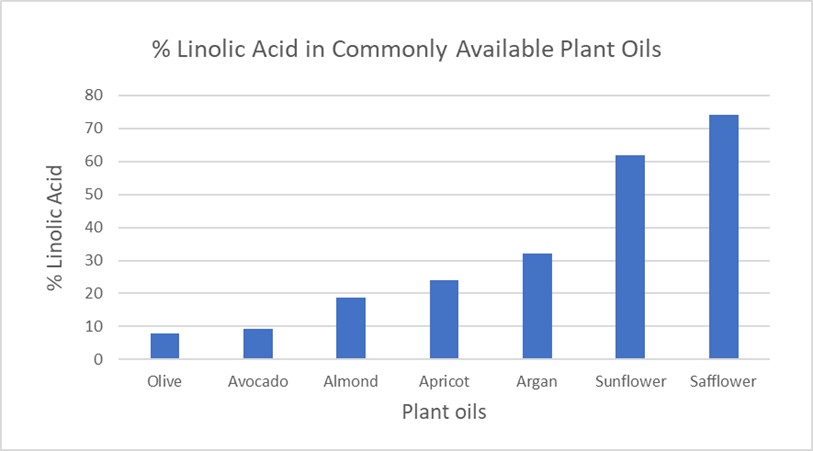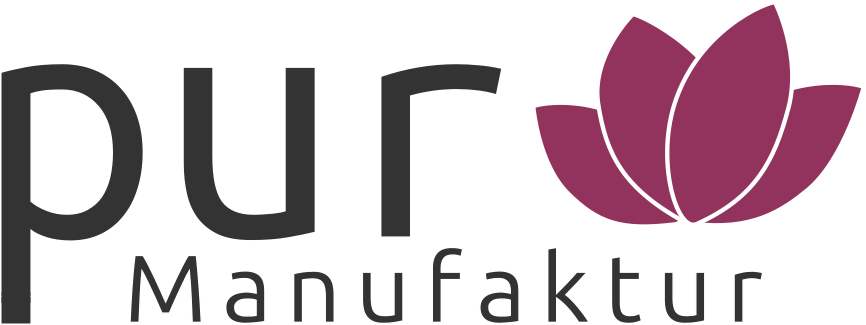Your cart is currently empty!
Safflower Oil Dry Skin Cream
Safflower oil dry skin cream is a skin cream formulated with safflower oil, Carthamus Tinctorius (Safflower) Seed Oil, a plant oil known for its high concentration of linolic acid. Linolic acid, Fig. 1 below, is an essential fatty acid, meaning our bodies cannot produce it on their own and we must obtain it through our diet or it can be applied in skincare products. This essential fatty acid plays a crucial role in skin health by aiding in the production of ceramides, a vital component of the skin’s protective barrier.

The graph below compares the Linolic acid content found in commonly available plant oils. The data was drawn from the analysis certificates of the oils purchased from All Organic Treasures GmbH. As can be seen in Fig. 2 below, Safflower oil contains the highest percentage of linolic acid, 74,2%.

Ingredients: Aqua, Carthamus Tinctorius (Safflower) Seed Oil, Glycerin, Urea, Panthenol, Sodium Lactate, Glyceryl Stearate, Glyceryl Stearate Citrate, Cetearyl Olivate, Sorbitan Olivate, Lactic Acid, Tocopherol, Amorphophallus Konjac Root Powder, Benzyl Alcohol, Benzoic Acid, Sorbic Acid
Glycerin: Glycerin is a structural component that is present in all fats, both plant and animal, and is also found in many ceramide structures. It is a colorless, odorless, viscous liquid that is sweet-tasting and non-toxic. The three hydroxyl groups of glycerin make it water-soluble and hygroscopic and it is widely used as a Humectant and sweetener.
Urea: Urea is a naturally occurring compound found in the human body. It acts as a humectant, drawing moisture into the skin. When used in topical moisturizers, urea helps to soften and hydrate dry, rough skin. It can also help to reduce the appearance of flaky skin and improve skin texture.
Panthenol: Panthenol, a provitamin, is converted to Vitamin B5 (Pantothenic Acid) by enzymes. Vitamin B5 is a crucial component of Coenzyme A (CoA). CoA is utilized by skin cells for metabolic processes like fatty acid synthesis and oxidation, as well as pyruvate oxidation in the citric acid cycle (Krebs cycle).
Sodium Lactate: Sodium lactate, a natural moisturizing factor (NMF), is the sodium salt of lactic acid. Found in the stratum corneum, it helps regulate skin moisture and maintains its barrier function.
Emulisifiers: Glyceryl Stearate, Glyceryl Stearate Citrate, Cetearyl Olivate, Sorbitan Olivate
Lactic Acid: Lactic acid is a product of the biological process of glycolysis, which is a metabolic pathway that occurs in the cytoplasm of cells and breaks down glucose into pyruvate, producing energy in the form of ATP.
Tocopherol: Tocopherol is a form of vitamin E. Its antioxidant properties help protect the skin from damage caused by free radicals, which can contribute to premature aging and wrinkles.
Amorphophallus Konjac Root Powder: a ground powder of the Asian tuber, Amorphophallus konjac. As a polysaccharide, it forms hydrogen bonds with water, creating a hydrated matrix that retains moisture. This moisturizing effect is due to its ability to capture epidermal moisture through polar groups like hydroxyl and carboxyl.
Benzoic Acid: Benzoic acid is a common food preservative that inhibits the growth of yeast and mold.
Benzyl Alcohol: Benzyl alcohol is an antimicrobial agent that prevents bacterial, fungal, and microbial growth. Beyond its natural occurrence in apricots, cranberries, and cocoa, manufactured benzyl alcohol serves as a flavor-enhancer in baked goods, liqueurs, and wines.
Sorbic Acid: Sorbic acid and its salt, potassium sorbate, are used as preservatives in cosmetics, personal care products, and various foods. They inhibit yeast and mold in processed cheese, wine, fruit juices, and baked goods. Sorbic acid is also used in processed meats as a nitrite alternative.
